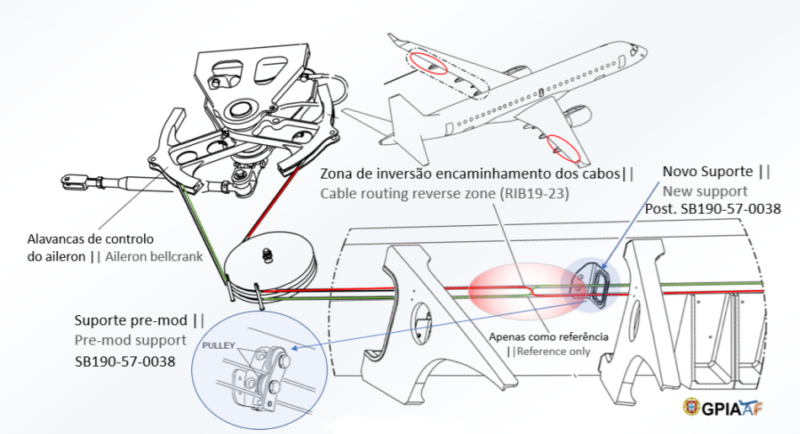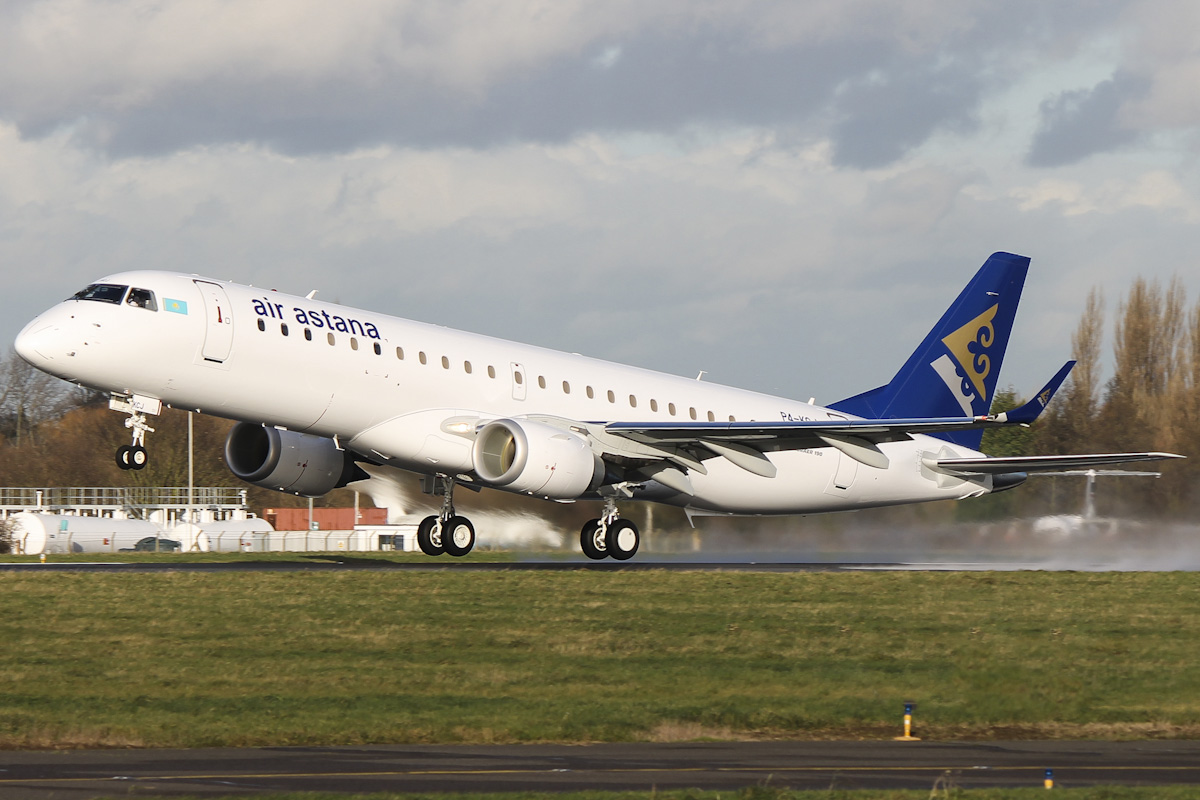The Air Traffic Accident Prevention and Investigation Office (GPIAAF) released a report on Friday the 31st of May that highlights faults in the maintenance of the E190 operated by Air Astana, which in November 2018, flew uncontrollably over Lisbon.
The Air Astana Embraer E190 involved had undergone a scheduled C-Check inspection at the OGMA facility at Alverca before its departure for Almaty, with a refueling stop-over at Minsk, on 11 November last year.
Immediately after take-off, with adverse meteorological conditions, the crew noticed the aircraft was not responding adequately to control inputs and declared an emergency. On board, there were three pilots (a captain and two co-pilots) and three technicians from the operator.
The preliminary report highlights investigators identified aileron cables that had been incorrectly rigged before a ferry flight, during which the pilots experienced the severe in-flight control problems.
“The data collected during the initial investigation phase included a detailed examination of the aircraft flight controls and an incorrect ailerons control cable system installation was confirmed on both semiwings.”

The Portuguese investigation authority, GPIAAF, has released a simulation image obtained from flight data showing the aircraft in a left roll exceeding 90° despite the yoke being turned hard to the right, illustrating the problems with which the pilots had to cope.

Adverse weather conditions, intense g-forces, and continuous alerts from the cockpit systems added to the complications. Such was the severity of the situation that the crew sought headings to fly out to sea, in order to ditch the aircraft.
“From the preliminary analysis to the condition of the aircraft after the event flight, significant structural damage in both semi-wing, fuselage and flight control surfaces was verified, which led the GPIAAF to change the initial classification of serious incident to accident”
Investigators released the aircraft (P4-KCJ) back to Air Astana on 21 January this year. The operator, coordinated with the manufacturer, began the evaluation process deciding further actions to the aircraft.
The report also reveals:
“… identification of deviations to the internal procedures by the maintenance service provider, which led to the error not being detected in the various safety barriers designed by the regulators, aeronautical maintenance industry and within the maintenance service provider implemented the system “
The conclusion of the report forces OGMA to do an action plan to eliminate the procedural deficiencies discovered in the course of the investigation, while Embraer is updating maintenance documentation in relation to flight controls.
Feature Image by OPT Photos


